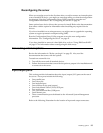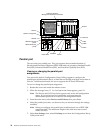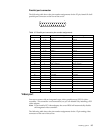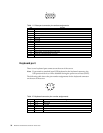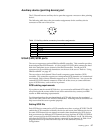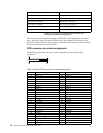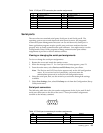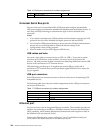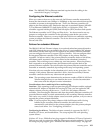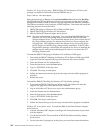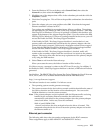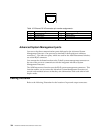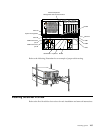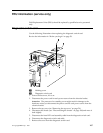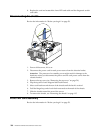Installing options 101
Note: The 100BASE-TX Fast Ethernet standard requires that the cabling in the
network be Category 5 or higher.
Configuring the Ethernet controller
When you connect the server to the network, the Ethernet controller automatically
detects the data-transfer rate (10Mbps or 100Mbps) on the network and then sets the
controller to operate at the appropriate rate. That is, the Ethernet controller will
adjust to the network data rate, whether the data rate is standard Ethernet (10BASE-
T), Fast Ethernet (100BASE-TX), half duplex (HDX), or full duplex (FDX). The
controller supports half-duplex (HDX) and full-duplex (FDX) modes at both speeds.
The Ethernet controller is a PCI Plug and Play device. You do not need to set any
jumpers or configure the controller for the operating system before you use the
Ethernet controller. However, you must install a device driver to enable the operating
system to address the Ethernet controller. The device drivers are provided on the
ServerGuide CDs.
Failover for redundant Ethernet
The IBM 10/100 Fault Tolerant Adapter is an optional redundant network interface
card (NIC adapter) that you can install in the server. If you install this NIC adapter
and connect it to the same logical LAN segment as the primary Ethernet controller,
you can configure the server to support a failover function. You can configure either
the integrated Ethernet controller or the NIC adapter as the primary Ethernet
controller. In failover mode, if the primary Ethernet controller detects a link failure,
all Ethernet traffic associated with it is switched to the redundant (secondary)
controller. This switching occurs without any user intervention. When the primary
link is restored to an operational state, the Ethernet traffic switches back to the
primary Ethernet controller. The switch back to the primary Ethernet controller can be
automatic or manually controlled, depending on the setup and operating system.
Note that only one controller in the redundant pair is active at any given time. For
example, if the primary Ethernet controller is active, then the secondary Ethernet
controller cannot be used for any other network operation.
Note: The operating system determines the maximum number of IBM 10/100 Fault
Tolerant Adapters that you can install in the server. See the documentation
that comes with the adapter for more information.
Considerations when combining failover and hot-plug
functions: If the operating system supports hot-plug PCI adapters and the optional
redundant NIC adapter is installed in a hot-plug PCI slot, you can replace the NIC
adapter without powering off the server — even if it is the primary Ethernet
controller. Disconnecting the Ethernet cable from the primary Ethernet controller will
cause the Ethernet traffic to switch automatically to the secondary Ethernet controller.
This can be very useful if a faulty adapter causes a network problem, or if you want to
upgrade the primary adapter hardware.
Note: If you hot replace the primary adapter while the Ethernet traffic is being
handled by the secondary Ethernet controller, the traffic does not
automatically switch back to the primary adapter when the primary adapter
comes back online. See “Configuring for failover”.
Configuring for failover: The failover feature currently is supported by OS/2™,
Windows NT Server, and IntraNetWare. The setup required for each operating
system follows.
Windows NT Server: IBM offers hot-plug support for Windows NT Server Version 4.0.
Failover can work in conjunction with hot-plug support or independently. If you are
not using hot-plug support, go to “Windows NT Server failover setup” on page 102.



